#dadaab refugee camp
Text

A Somali refugee girl sits perched on a tree in Ifo camp, Dadaab in Kenya Photo by Brendan
2 notes
·
View notes
Text
The Wondrous Child
The Wondrous Child: Alakananda Ma's 2023 New Year's Letter
The child shall enjoy all the rights set forth in this Declaration. Every child, without any exception whatsoever, shall be entitled to these rights, without distinction or discrimination on account of race, colour, sex, language, religion, political or other opinion, national or social origin, property, birth or other status, whether of himself or of his family.
The child shall enjoy special protection, and shall be given opportunities and facilities, by law and by other means, to enable him to develop physically, mentally, morally, spiritually and socially in a healthy and normal manner and in conditions of freedom and dignity.
UN Declaration on the Rights of the Child.
At this time of year, millions around the world are turning their thoughts to a child born in Bethlehem. In churches on every continent, Isaiah’s messianic prophecy is read,
“The people that walked in darkness have seen a great light. Unto them that dwell in the land of deep shadow, a light has shone. For a child has been born for us, a son is given to us, and the government shall be upon his shoulder. And this is the name they shall give him, wondrous counselor, mighty God, everlasting father, prince of peace.”
For some, the wondrous child is still to come, as Messiah or as Imam Mahdi. For some, he is Krishna, born again and again whenever righteousness grows weak and unrighteousness prevails. And for those who celebrate Christmas, the wondrous child was born in a stable in Bethlehem and heralded by angels who proclaimed peace on earth and good will to all.
But in our Aquarian age, in the age of the collective, who is this wondrous child, the prince of peace? Who is the one who brings light in a dark time?
Dear sisters and brothers, today the wondrous child shivers in the Arctic air in Matamoros, just south of the US border. The wondrous child drowns, attempting to cross the icy English Channel in a flimsy boat. The one-year-old prince of peace dies of hunger and thirst in a small boat off the coast of Libya.
Today, the wondrous child is wet and cold in a flooded camp in Northern Syria. The wondrous child huddles in a bomb shelter in Kiev. The wondrous child is sold into marriage in Afghanistan, because her parents cannot afford to feed her. The wondrous child suffers from severe acute malnutrition in Mali. The wondrous child, fleeing drought, lives in a makeshift shelter in Dadaab refugee camp in Kenya.
The wondrous child has seen her classmates killed in Robb Elementary School. The wondrous child, who wanted to be an inventor and prayed to the God of Rainbows, is murdered by security forces in Iran. The prince of peace, protesting at Al Aqsa mosque, is detained by Israeli security forces.
The wondrous child is cold and hungry on Pine Ridge Reservation. The wondrous child goes to school hungry in rural Louisiana. The wondrous child goes to bed hungry in Nagada village, Odisha. The Rohingya prince of peace has no school to go to in Cox’s Bazaar camp. The wondrous child in Sindh faces a winter of cold with no home left, after this year’s cataclysmic floods.
Seventy-four years have passed since one of humanity’s greatest achievements, the promulgation of the Universal Declaration of Human Rights; sixty-three since the UN adopted the Declaration of the Rights of the Child. Since that time, we have made incredible technological advances, yet these advances have not been matched by progress in the area of human rights. Countless children, not only in poor nations but even in the richest country in the world, are effectively deprived of their basic rights.
Where does the power lie to change this? It lies with us, We the People of the world. It is we to whom these rights belong, we who are their guardians, we who are the ultimate protectors of each and every child. As we celebrate a new year in the hope that a child will be born for us who will turn darkness into light, let us remember that every child is the prince or princess of peace. If any child is robbed of the right to life, liberty and security, if any child does not receive the food, housing, nurturance and education necessary to fulfill their potential, it is not only they who are deprived. The world is robbed, the future is robbed, of all they have to offer. Make a special resolution for 2023. Resolve to get up, stand up, stand up for children’s rights.
Dear ones, this year’s Pakistan flood emergency was the single most devastating climate catastrophe to date. Its scale is almost unimaginable, and the misery caused has no end in sight. Countless families have not only lost their homes, loved ones, livestock and belongings, they have also lost their fields, their livelihoods, their communities and their stores of food. They face a winter of cold, hunger and misery. Despite having done nothing to contribute to the climate crisis, they are its foremost victims. Please join me in supporting the children of Pakistan at this crucial time.
I wish you a year of happiness and joy, and may peace and justice prevail throughout our world.
Blessings,
Alakananda Ma
Support Pakistan flood victims:
https://irusa.org/asia/pakistan/
https://www1.hhrd.org/Campaigns/Pakistan-Relief/Pakistan-Flood-Relief
https://www.globalgiving.org/projects/relief-recovery-for-flood-affected-in-pakistan/
2 notes
·
View notes
Text
Why Kenyans Are Flocking to Job Opportunities in Canada
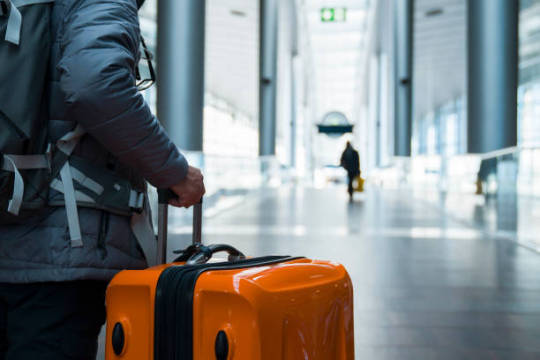
Why Kenyans Are Flocking to Job Opportunities in Canada
Kenyans on the lookout for jobs are shifting their focus from Europe to Canada.
According to the Canadian Immigration Department, over 13,000 Kenyans are employed in various economic sectors in Canada.
Kenyans attempt to acquire the necessary documents to fly to Canada due to the country’s political and economic stability.
Additionally, Canada offers additional benefits, such as a highly developed healthcare system and an internationally renowned education system.
“There are now over 13,000 people of Kenyan origin who live in Canada. This number continues to grow yearly due to more Kenyans moving to Canada to immigrate, work, and study,” the immigration department stated.
The Canadian dollar also benefits Kenyans seeking employment in Canada. According to the indicative rates published by the Central Bank of Kenya (CBK) on June 9, the exchange rate between the Kenyan shilling and the Canadian dollar is Ksh104.
In addition to employment opportunities, the Canadian Immigration Department website indicates that Kenyans are in a strong position to immigrate to Canada due to their proficiency in English, education, and professional work experience.
The majority of Kenyans migrating to Canada are enrolled in the health sector. In January of 2023, 65 Kenyan nurses from the Dadaab and Kakuma refugee camps were hired by a Canadian medical facility.
Additionally, the hospitality industry is a major employment sector. On Thursday, May 18, 2023, a Canadian hotel chain launched a fundraising campaign to assist two Kenyan immigrants with their relocation to Canada.
“Our goal is to raise Ksh550,000 ($4000) in funds that would go towards the costs of their travel, food, basic household items and the fees they will incur while working to become permanent residents of Canada,” the company started.
The education, business, and information technology sectors, as well as the construction and homecare industries, follow suit.
Conditions for Job-Seekers
Canadian Minister of Immigration, Refugees, and Citizenship Sean Fraser stated that Kenyans must meet the requirements of the Labour Market Impact Assessment (LMIA), which will be issued to prospective employers by Employment and Social Development Canada (ESDC).
Fraser added that after confirmation, Kenyans must apply to Immigration, Refugees, and Citizenship Canada (IRCC) for a work permit.
In addition, he stated that applicants must pass a skills and language assessment in order to be considered.
Immigration, Refugees and Citizenship Canada cautioned Kenyans against employment schemes due to the demand. In a statement, they claimed that certain Kenyans were spreading false information to deceive applicants.
Alfred Mutua, Cabinet Secretary for Foreign Affairs, reiterated this by cautioning Kenyans against falling for employment schemes.
“Canada is proud to be a top destination for global talent and an increasingly popular destination for Kenyan nationals, including international students and workers in the agriculture industry.
According to a statement, Minister Fraser and the Cabinet Secretary have reached an agreement.
As part of this agreement, officials from Immigration, Refugees, and Citizenship Canada (IRCC) will offer a detailed briefing to Kenyan officials.
The briefing will encompass information about Canada’s various immigration programs and provide additional guidance on the application process for foreign nationals interested in these programs.
Why Kenyans Are Flocking to Job Opportunities in Canada
Read the full article
0 notes
Text
Kenya safe havens at risk with draconian anti-gay bill
In Kenya, the latest Kill the Gays copycat bill is moving through Parliament and threatens thousands of LGBTQ+ refugees fleeing persecution in neighboring Uganda.
The proposed law, the latest in a wave of anti-LGBTQ+ legislation introduced across Africa, would expel refugees and asylum seekers who identify as gay, in addition to meting out punishment for an exhaustive list of other “immoral” or abetting offenses.
---
Related Stories
Ugandans flee as Kill the Gays gains momentum across Africa
Arizona-based Family Watch International is a key player stoking anti-LGBTQ+ hate across the continent.
---
Provisions in the bill seek the “expulsion of refugees and asylum seekers who breach the law” and would mandate “psychotherapy and rehabilitation of offenders,” raising the prospect of reeducation camps and forced conversion therapy.
The bill mandates life in prison for anyone engaging in homosexual sex.
Kenya has been the primary destination of LGBTQ+ individuals fleeing Uganda in the wake of that East African nation’s Kill the Gays bill 2.0, which President Yoweri Museveni recently sent back to Parliament for further consideration of additional penalties.
Museveni congratulated lawmakers who stood up to “international pressure and shielded Uganda’s moral fabric during the passing of the bill” and signaled his intention to sign the law.
While Ugandans fleeing persecution are holed up in refugee camps and safe houses throughout Kenya, hostility toward LGBTQ+ people has been growing in the former British colony, as well.
In February, the Kenyan Supreme Court ruled that the National Gay and Lesbian Human Rights Commission could register as a non-governmental organization there, sparking outrage among conservative lawmakers and President William Ruto, who ordered his government’s attorney general to challenge the court’s decision as a violation of Kenyan and moral law.
Then earlier this month, Member of Parliament Peter Kaluma introduced his copycat Family Protection Bill, modeled on Uganda’s Anti-Homosexuality Act. The lawmaker’s proposed legislation followed a summit of anti-LGBTQ+ activist lawmakers in Uganda in March, organized by Family Watch International, an Arizona-based organization committed to spreading anti-LGBTQ+ and anti-abortion ideology around the world. The group was instrumental in crafting the original Kill the Gays bill in Uganda in 2009.
“Same-sex sexual acts and unions are sterile by nature,” Kaluma said, introducing the legislation. “If tolerated or supported and propagated, would lead to the extinction of the human race.”
Paradoxically, Kenya is the only East African nation to accept LGBTQ+ refugees and asylum seekers without questioning their sexual orientation.
The country hosts more than half a million displaced people from nearby countries in refugee camps in Dadaab and Kakuma. Kakuma is one of the largest in the world.
Multiple reports from the Organization for Refuge, Asylum and Migration and the U.N. Refugee Agency in Kenya document human rights violations against LGBTQ+ people at both refugee camps.
Earlier this year, more than 300 LGBTQ+ refugees at Kakuma launched a signature drive protesting discrimination, torture, and mistreatment.
“As refugees who have sought safety and refuge from conflict and persecution, we should not have to endure further suffering and discrimination within the confines of the camp,” the petition reads. “Yet, this is the reality for many of us.”
Police brutality and mistreatment have led to death, disability, and “a climate of fear and insecurity within the camp, where we are unable to live freely and openly as members of the LGBTIQ+ community,” the signatories wrote. “We are tired of living in fear, and we demand an end to these injustices.” http://dlvr.it/SnB9dr
0 notes
Photo

Kenya’s Dadaab camp swells with Somalis fleeing drought, conflict
Countries: Kenya, Somalia Source: UN High Commissioner for Refugees Failed rains and lingering conflict have driven more than 110,000 Somalis across the border in the past two years into Kenyan camps already struggling to cope with drought.
https://reliefweb.int/report/kenya/kenyas-dadaab-camp-swells-somalis-fleeing-drought-conflict
#Kenya#Somalia#UN High Commissioner for Refugees#Food and Nutrition#Health#Protection and Human Rights#Shelter and Non-Food Items#Water Sanitation Hygiene#News and Press Release#Drought#ReliefWeb - Updates (Headlines)
0 notes
Text
Children go hungry at Kenya refugee camp as malnutrition numbers soar
MSF charity reports 33% rise in malnourished patients at giant Dadaab complex after influx from drought-stricken Somalia Somali farmer Borow Ali …Children go hungry at Kenya refugee camp as malnutrition numbers soar
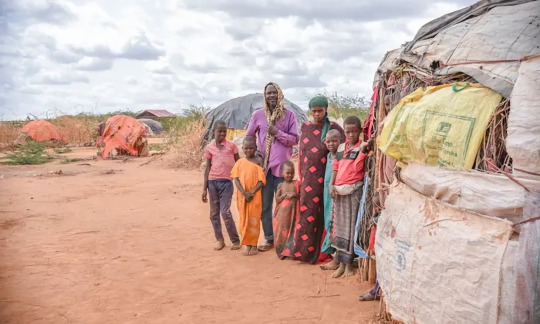
View On WordPress
0 notes
Link
MSF charity reports 33% rise in malnourished patients at giant Dadaab complex after influx from drought-stricken SomaliaMalnutrition among children in one of the world’s largest refugee camps has surged over the past year as concerns grow at worsening conditions...
0 notes
Text
Drought, conflict force 80,000 Somalis to shelter in Kenya’s Dadaab refugee camps — Global Issues
Drought, conflict force 80,000 Somalis to shelter in Kenya’s Dadaab refugee camps — Global Issues
An estimated 24,000 people have arrived at the camp complex since the end of September, some of the more than 80,000 taken in there during the past two years, according to UNHCR spokesperson Boris Cheshirkov.
He told journalists in Geneva that despite a recent drop in the pace of daily arrivals at Dadaab, an arid part of northeast Kenya, “adequate space in the camps …is running out”.
This has…

View On WordPress
0 notes
Text
SUDARSHAN LIVE KHABAR LOBBY
Sudarshanlive: 07/12/2022, international news updates, Report by – United Nations
“More than 80,000 people have arrived in Kenya’s Dadaab refugee camps, the majority arriving over the past two years fleeing ongoing insecurity in #Somalia 🇸🇴 and the longest and most severe drought in decades.” – UNHCR, the UN Refugee Agency at today’s UN Geneva press briefing.
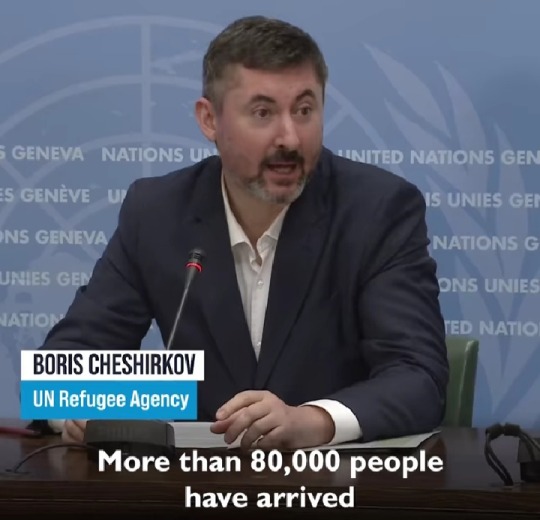
View On WordPress
0 notes
Text
Drought, conflict force 80,000 Somalis to shelter in Kenya’s Dadaab refugee camps
Drought, conflict force 80,000 Somalis to shelter in Kenya’s Dadaab refugee camps
An estimated 24,000 people have arrived at the camp complex since the end of September, some of the more than 80,000 taken in there during the past two years, according to UNHCR spokesperson Boris Cheshirkov.
He told journalists in Geneva that despite a recent drop in the pace of daily arrivals at Dadaab, an arid part of northeast Kenya, “adequate space in the camps …is running out”.
This has…

View On WordPress
0 notes
Link
Several SECONDARY SCHOOL TEACHERS are needed at Dadaab Refugee Camp & Kakuma Refugee Camp Jobs Placements. Here are the details ...
0 notes
Text
Why Kenyans Are Flocking to Job Opportunities in Canada
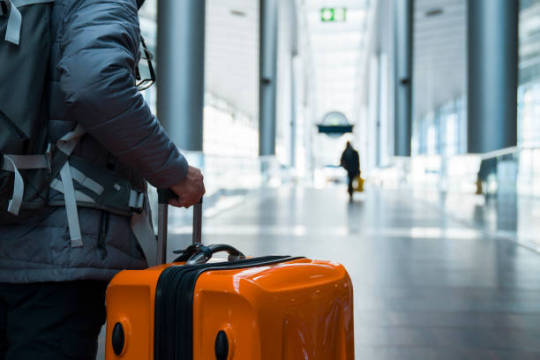
Why Kenyans Are Flocking to Job Opportunities in Canada
Kenyans on the lookout for jobs are shifting their focus from Europe to Canada.
According to the Canadian Immigration Department, over 13,000 Kenyans are employed in various economic sectors in Canada.
Kenyans attempt to acquire the necessary documents to fly to Canada due to the country’s political and economic stability.
Additionally, Canada offers additional benefits, such as a highly developed healthcare system and an internationally renowned education system.
“There are now over 13,000 people of Kenyan origin who live in Canada. This number continues to grow yearly due to more Kenyans moving to Canada to immigrate, work, and study,” the immigration department stated.
The Canadian dollar also benefits Kenyans seeking employment in Canada. According to the indicative rates published by the Central Bank of Kenya (CBK) on June 9, the exchange rate between the Kenyan shilling and the Canadian dollar is Ksh104.
In addition to employment opportunities, the Canadian Immigration Department website indicates that Kenyans are in a strong position to immigrate to Canada due to their proficiency in English, education, and professional work experience.
The majority of Kenyans migrating to Canada are enrolled in the health sector. In January of 2023, 65 Kenyan nurses from the Dadaab and Kakuma refugee camps were hired by a Canadian medical facility.
Additionally, the hospitality industry is a major employment sector. On Thursday, May 18, 2023, a Canadian hotel chain launched a fundraising campaign to assist two Kenyan immigrants with their relocation to Canada.
“Our goal is to raise Ksh550,000 ($4000) in funds that would go towards the costs of their travel, food, basic household items and the fees they will incur while working to become permanent residents of Canada,” the company started.
The education, business, and information technology sectors, as well as the construction and homecare industries, follow suit.
Conditions for Job-Seekers
Canadian Minister of Immigration, Refugees, and Citizenship Sean Fraser stated that Kenyans must meet the requirements of the Labour Market Impact Assessment (LMIA), which will be issued to prospective employers by Employment and Social Development Canada (ESDC).
Fraser added that after confirmation, Kenyans must apply to Immigration, Refugees, and Citizenship Canada (IRCC) for a work permit.
In addition, he stated that applicants must pass a skills and language assessment in order to be considered.
Immigration, Refugees and Citizenship Canada cautioned Kenyans against employment schemes due to the demand. In a statement, they claimed that certain Kenyans were spreading false information to deceive applicants.
Alfred Mutua, Cabinet Secretary for Foreign Affairs, reiterated this by cautioning Kenyans against falling for employment schemes.
“Canada is proud to be a top destination for global talent and an increasingly popular destination for Kenyan nationals, including international students and workers in the agriculture industry.
According to a statement, Minister Fraser and the Cabinet Secretary have reached an agreement.
As part of this agreement, officials from Immigration, Refugees, and Citizenship Canada (IRCC) will offer a detailed briefing to Kenyan officials.
The briefing will encompass information about Canada’s various immigration programs and provide additional guidance on the application process for foreign nationals interested in these programs.
Why Kenyans Are Flocking to Job Opportunities in Canada
Read the full article
0 notes
Text
Refugees in Kenya’s Kakuma and Dadaab camps are still in limbo | Refugees
Refugees in Kenya’s Kakuma and Dadaab camps are still in limbo | Refugees
In March 2021, Kenya ordered the swift closure of Kakuma and Dadaab – two sprawling refugee camps that host more than 400,000 people, mostly from neighbouring Somalia, South Sudan and the Democratic Republic of the Congo – and gave the United Nations refugee agency (UNHCR) just two weeks to come up with a plan to do so.
In response, UNHCR presented Kenya with what it said were “sustainable…

View On WordPress
0 notes
Link
PHOENIX, Ariz. — New moms have a lot on their minds. That stress is even worse if those moms are raising their kids in a refugee camp like Dadaab Refugee Complex in the East African nation of Kenya. Now, two teens have designed a website and locator system to help those moms remember when they and their kids need to get to the doctor. And if the parents can’t get to the doctor, the system lets a health worker instead find them.
Kunjal Bharatkumar, 15, and Supraja Sayee Srinivasan, 15, are 10th graders at the Shree Cutchi Leva Patal Samaj School in Nairobi, Kenya. The two wanted to help mothers and children in Kenya get the health care they needed.
Explainer: What is a vaccine?
Supraja notes that between 2013 and 2018, 68,882 children in Kenya died of diseases that could have been prevented with vaccines — drugs that help the body become immune to a disease. Unfortunately, mothers in refugee camps may not know what vaccines their children need, and which ones they have already had.
Another big healthcare issue: “About 73,000 children in Kenya are malnourished,” Supraja says. In many cases, parents don’t get the proper information on what their children need. “We felt that technology does have the power to save these lives,” she says.
To tackle that, Kujal and Supraja created a website called “Mother and Child Health Care.” This site allows doctors and parents to track what vaccines kids need. It can also take a child’s height and weight and calculate whether they are seriously underweight. If they are, it recommends a diet to help the child achieve a healthy weight.
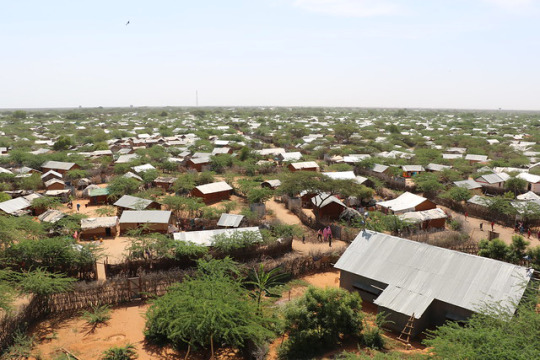
This is the Dadaab Refugee Camp in Kenya. With hundreds of thousands of residents, it has for years been one of the world’s largest refugee camps. Parts of the camp have become semi-permanent towns.
CREDIT: ©Anouk Delafortrie/ECHO/ European Union/Flickr (CC BY-ND 2.0)
Key to the system: GPS
The teens paired their website with small GPS devices — trackers that monitor their position. A mother gets a GPS bracelet and her baby a GPS necklace. This jewelry isn’t tracking people all the time. It turns on when it's time to alert the mother that her child is due for its next vaccine. Then, mom can take her child to get the shots.
Many times, however, a mother and child can’t make it to the doctor. If they miss their vaccine appointment, the GPS system activates. It now sends a signal to health-care workers in their area to visit — with vaccines in tow. When they sign off that the child has received a vaccine, the system deletes the GPS data.
Health-care workers also can use the site to create a map of diseases that are active in various counties. This could help them figure out if a deadly disease — such as cholera — is spreading. When it is, they can bring help to where it is needed.
But would doctors and parents use such a service? To find out, the teens’ teacher, Laban Chweya, reached out to a healthcare worker at the Dadaab Refugee Complex. It’s one of the world’s largest refugee camps. More than 235,000 people there have fled poor and war-torn countries such as Somalia, South Sudan and Ethiopia.
At the Dadaab complex, Kujal and Supraja handed out GPS bracelets to 30 pregnant women and put GPS necklaces on 30 children that were younger than five. They taught all these mothers and 15 health care workers how to use their website. Over the next six months, the teens collected data on how easy the system was for the mothers and doctors to use. They also kept track of how many kids got their vaccines.
Many mothers did not get their children vaccinated, despite getting reminders. They just couldn’t get to a site that offered the medicine. But when their GPS systems were turned on, health-care workers sought them out. The result: More of these children were eventually vaccinated. The mothers also said that they appreciated the GPS trackers and the diet advice that they got for their children. More than 70 percent were willing to wear them and have their children wear them.
#science#scied#sciblr#student scientists#health#maternal health#pediatric care#vaccines#refugee camp#GPS tracker#Dadaab Refugree Complex#kenya
9 notes
·
View notes
Text
Somali refugees study the Quran in the Dadaab refugee camp
Somali refugees study the Quran at a school in the Dadaab refugee camp, Kenya.
#Somalia#Refugee Crisis#Migrant Crisis#Drought in Somalia#Dadaab refugee camp#Child Refugees#African Migrants
0 notes